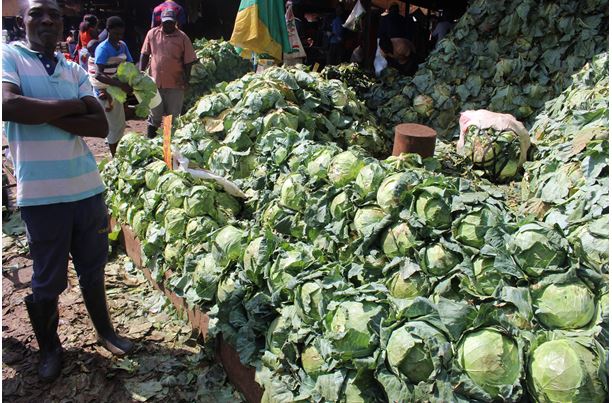By Charles Dhewa
Farmers and traders who do not frequent the booming African mass market will never know their depth. New market entrants use commodities like leafy vegetables that are easy to produce. Once they are in the market, farmers are exposed to different kinds of leafy vegetables ranging from ordinary Viscose to ever green Viscose. Eventually the farmers decide to get more sophisticated by graduating into cabbage production and supply. Here new knowledge includes appropriate varieties to grow, when and how to sell.
From talking to farmers and traders in the market, farmers also become aware of the time of the year production challenges are most likely to be encountered as well as quantities of different commodities required by the market in particular days. For instance, in most African urban mass markets, delivering commodities on Sunday for selling on Monday morning is more profitable because most farming communities do not work on Sunday and that means the market will be empty on Monday. The farmer also discovers that Fridays and Saturdays are good selling days for most commodities because outside markets come to buy on Fridays and Saturdays for restocking. Saturday is also a shopping day for urban dwellers while some travel to see their relatives in rural areas.
Learning from consumer choices
The mass market also informs the farmer and trader about sizes required by the market shown through buyer choices as different sizes compete for the consumer budget in the market. Other key factors learned from the market include quality, appropriate finishing and leafy cover as well as selling tricks and buying patterns. Pricing is also learned from the market – the farmer begins to see whether s/he is pricing his/her commodity fairly. Appropriate delivery times and consumer preferences like size and colour are also picked from the market. Farmers who arrive in the market late will find most customers who buy more volumes already gone. The farmer also gets to know about quality as determined by ripening stages for cabbages and tomatoes whose ripening stages have a big influence on quality and shelf life. Likewise, the market informs the farmer about different shelf lives for diverse commodities.
Without feedback, farmers are not aware of the consequences of their actions or decisions
If the market does not inform farmers about quantities to produce and when, the farmers will produce more at the wrong time, for instance during the off-season. In addition to getting advice on alternative crops to venture into, through the market farmers are able to establish networks with other value chain actors like buyers, customers, traders, consumers, transporters and financiers. Engaging with other farmers enables new farmers to know types of chemicals and fertilizers to use for particular crops at a given time.
Mass markets enable farmers to meet informal financiers like traders who can easily finance certain crops without need for collateral. As financiers, traders can also advise farmers on what crops to grow, when and how? It is also through mass markets that farmers are able to maintain their customer base and also get new customers. Farmers also gets educated about the preferred packaging materials and sizes as well the best way of packaging specific commodities.
Prospective business opportunities can be picked from the market. If a farmer produces the same commodity for a long time, it reaches a level where production gets boring and the farmer begins to look for new crops or with a different market altogether – from mass markets to formal markets or exports. However, a new entrant has to start with lower bar crops like leafy vegetables and graduate into complicated commodities. With the right knowledge, the farmer can leap-frog some stages.
Agricultural shows have a different focus and impact
Although they receive a lot of attention from the media and policy makers, agriculture shows attract a few farmers purported to have excelled in producing particular crops or livestock. These farmer are mostly those who will have been judged to be the best from district to national levels according to given criteria. However the time lag between when a farmer is judged to have been the best and the final show event at national level conveys they wrong impression that there are no other champions in between.
Commodities that will have been judged to be the best are the ones exhibited at the agricultural show but there is no comparison by variety and no explanation on varieties preferred by consumers. The show also tends to mix farmers from different regions yet conditions are different in each district and these influence performance. A farmer in Mazowe which is in natural region two with good rainfall and other advantages should not be compared with a farmer in natural region five Hwange.
